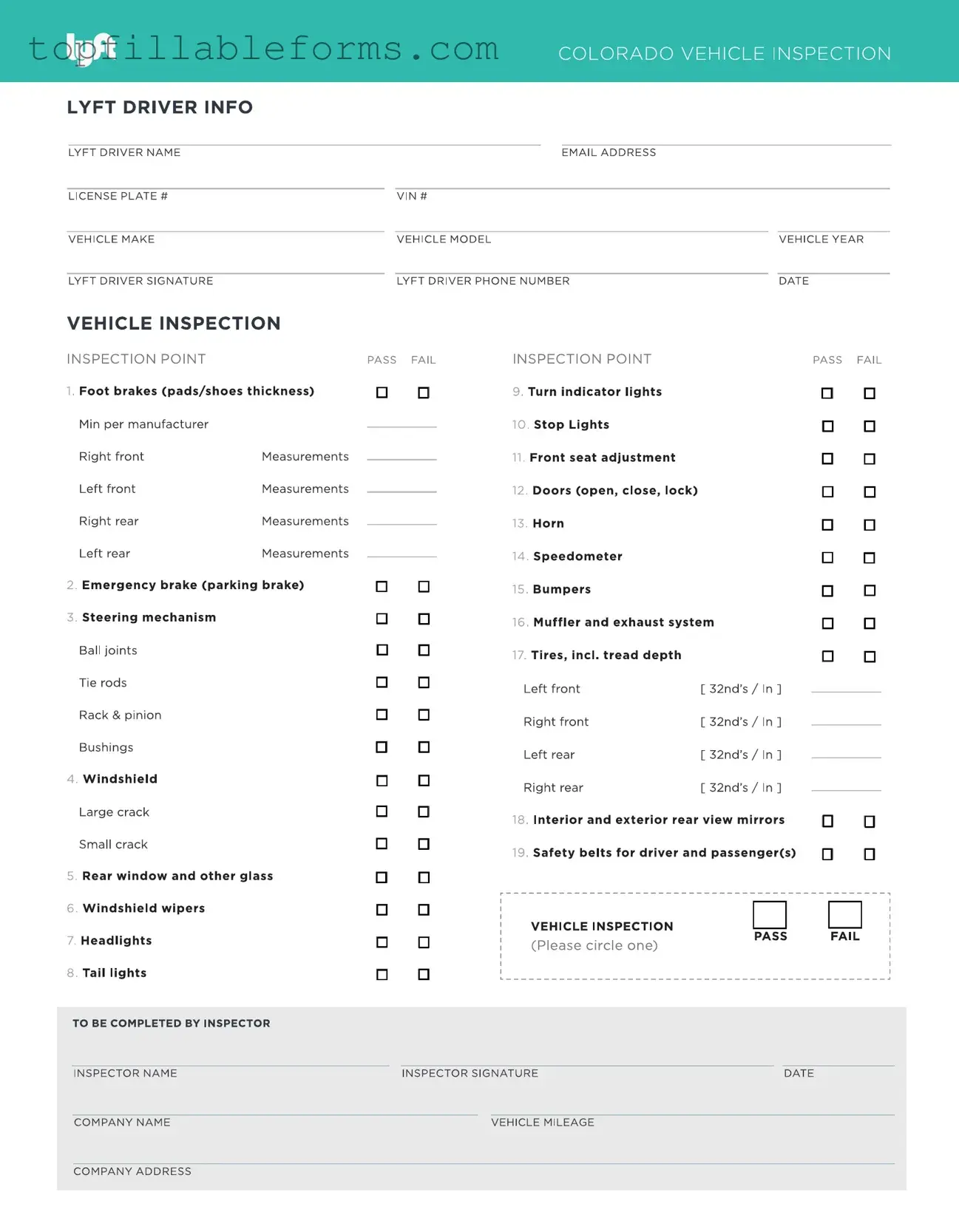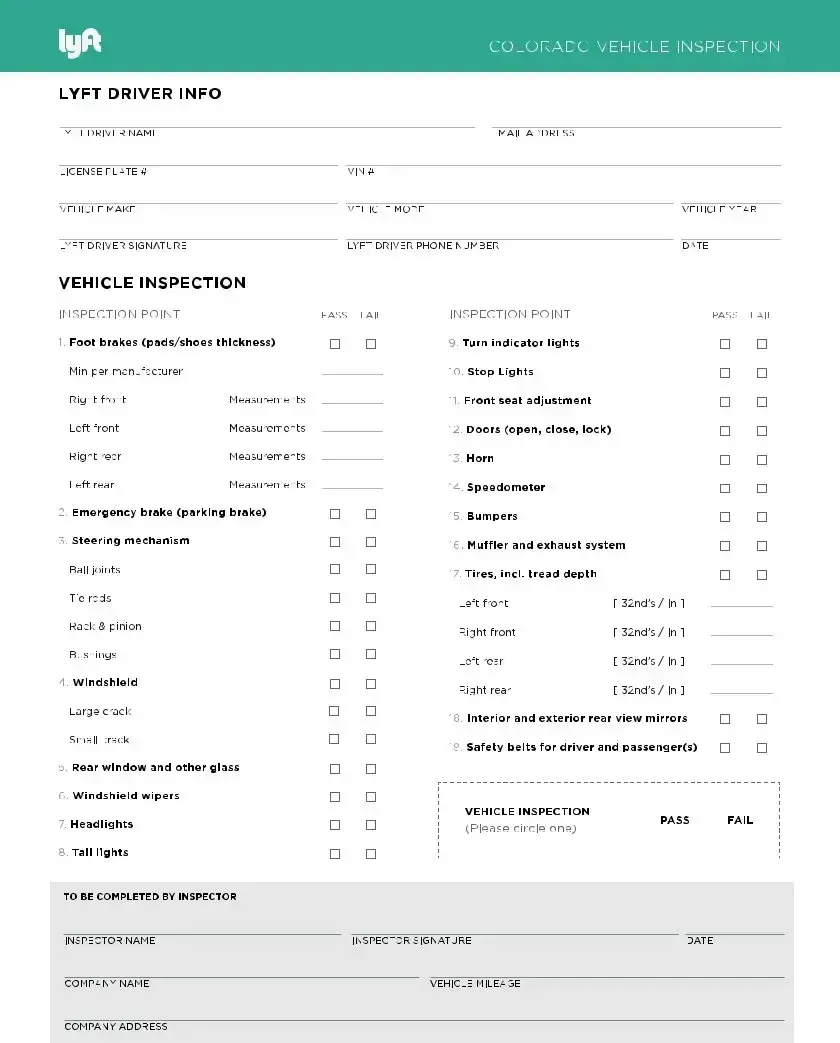Printable Lyft Inspection Form in PDF
The Lyft Inspection form is a crucial document designed to ensure that vehicles meet safety and operational standards before they can be used for ridesharing. This form helps maintain a safe environment for both drivers and passengers by verifying that the vehicle is in good working condition. Completing the inspection is an essential step for drivers who wish to provide services through the Lyft platform.
Open Lyft Inspection Editor Here

